Bukchon Hanok Village
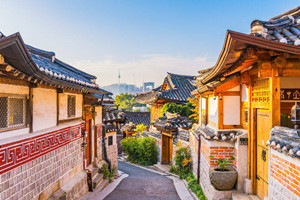 |
Bukchon Hanok Village is a Korean traditional village in Seoul with a long history located on the top of a hill between Gyeongbok Palace, Changdeok Palace and Jongmyo Royal Shrine. The traditional village is composed of many alleys, hanok and is preserved to show a 600-year-old urban environment. |
N Seoul Tower
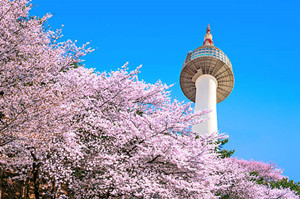 |
The N
Seoul Tower, officially the YTN Seoul Tower and
commonly known as Namsan Tower or Seoul Tower,
is a communication and observation tower located
on Namsan Mountain in central Seoul, South
Korea. The 236-meter (774 ft)-tall tower marks
the second highest point in Seoul. |
Deoksugung Palace
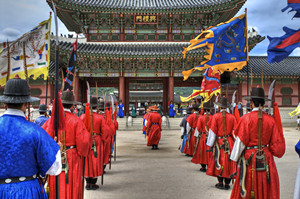 |
Deoksugung, also known as Gyeongun-gung, Deoksugung Palace, or Deoksu Palace, is a walled compound of palaces in Seoul that was inhabited by members of Korea's royal family during the Joseon monarchy until the annexation of Korea by Japan in 1910. It is one of the "Five Grand Palaces" built by the kings of the Joseon Dynasty. The buildings are of varying styles, including some of natural cryptomeria wood[citation needed]), painted wood, and stucco. Some buildings were built of stone to replicate western palatial structures. |
Cheongwadae
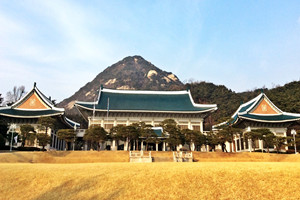 |
Cheongwadae, also known as the Blue House, is the Korean presidential residence. Located in central Seoul, visitors may visit Cheongwadae through an official tour. The presidential office, reception hall, and conference room are located in Cheongwadae's main building. The residence's grounds have a pond and gardens that reach to the foot of Bugaksan Mountain. Reservations for tours must be made in advance; reservations can be made as far as 6 months in advance and no sooner than 20 days before the desired tour date. |
Myeongdong Shopping Street
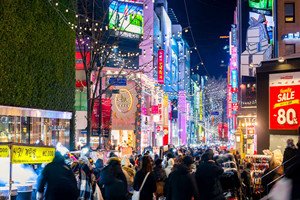 |
Myeongdong is a dong in Jung-gu, Seoul, South Korea between Chungmu-ro, Eulji-ro, and Namdaemun-ro. It covers 0.99km² with a population of 3,409 and is mostly a commercial area, being one of Seoul's main shopping, parade route and tourism districts. In 2011, 2012 and 2013, Myeong-dong was listed as the ninth most expensive shopping street in the world. The area is known for its two historically significant sites, namely the Myeongdong Cathedral and the Myeongdong Nanta Theatre. |
Dongdaemun Design Plaza
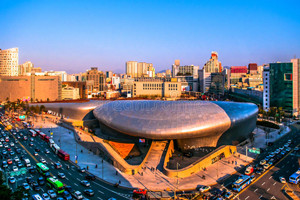 |
The Dongdaemun Design Plaza, abbreviated as DDP, is a major urban development landmark in Seoul, South Korea designed by Zaha Hadid and Samoo, with a distinctively neofuturistic design characterized by the "powerful, curving forms of elongated structures". The landmark is the centerpiece of South Korea's fashion hub and popular tourist destination, Dongdaemun, featuring a walkable park on its roofs, large global exhibition spaces, futuristic retail stores and restored parts of the Seoul fortress. |
